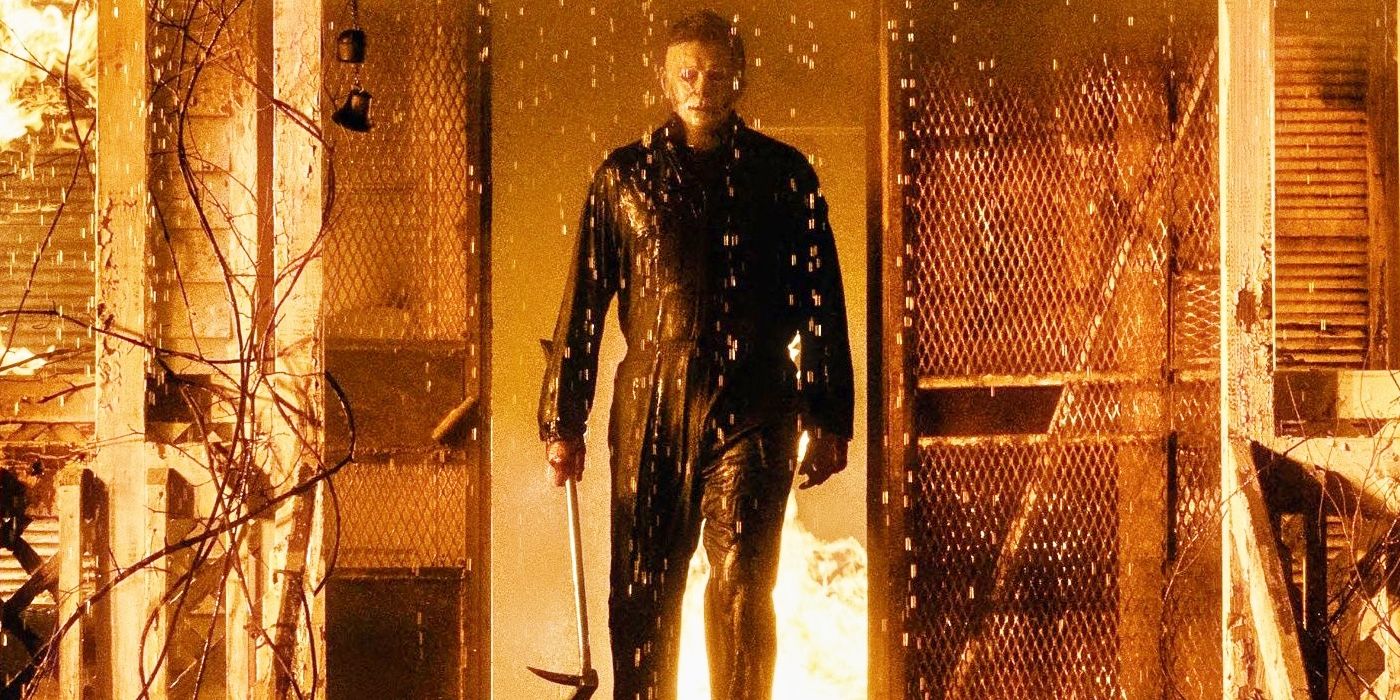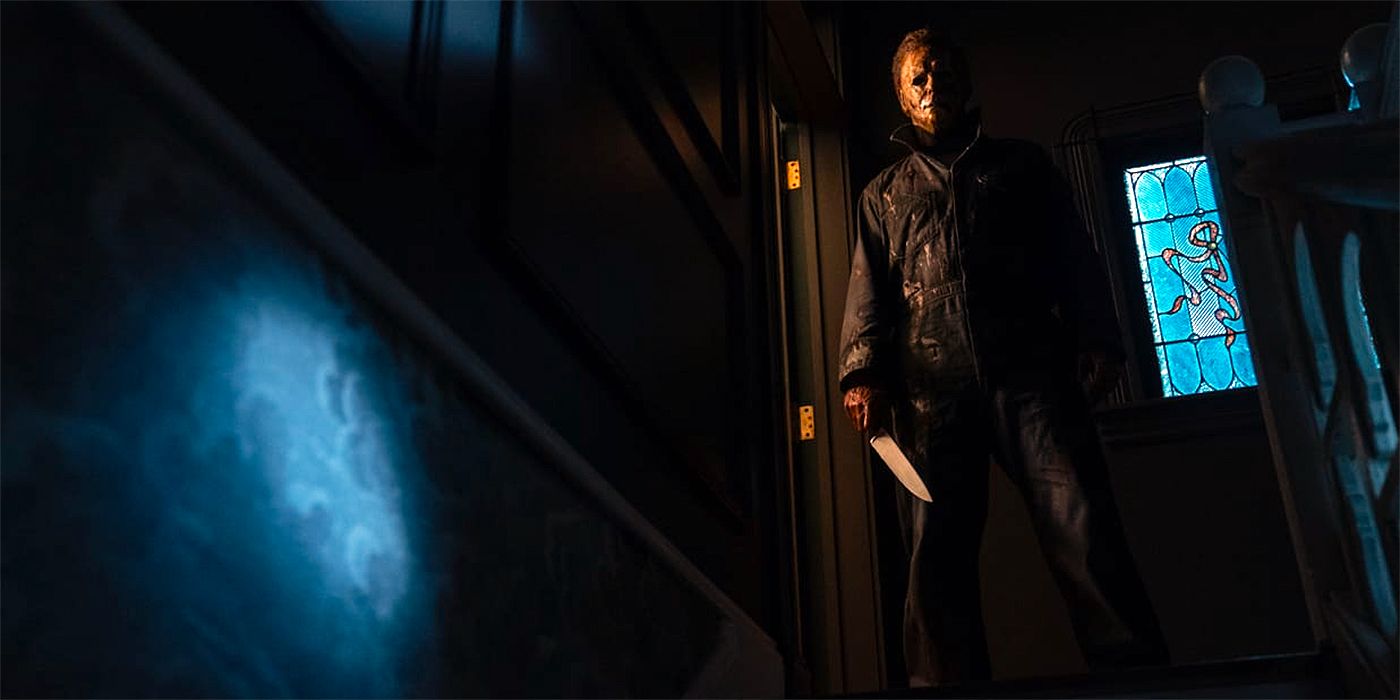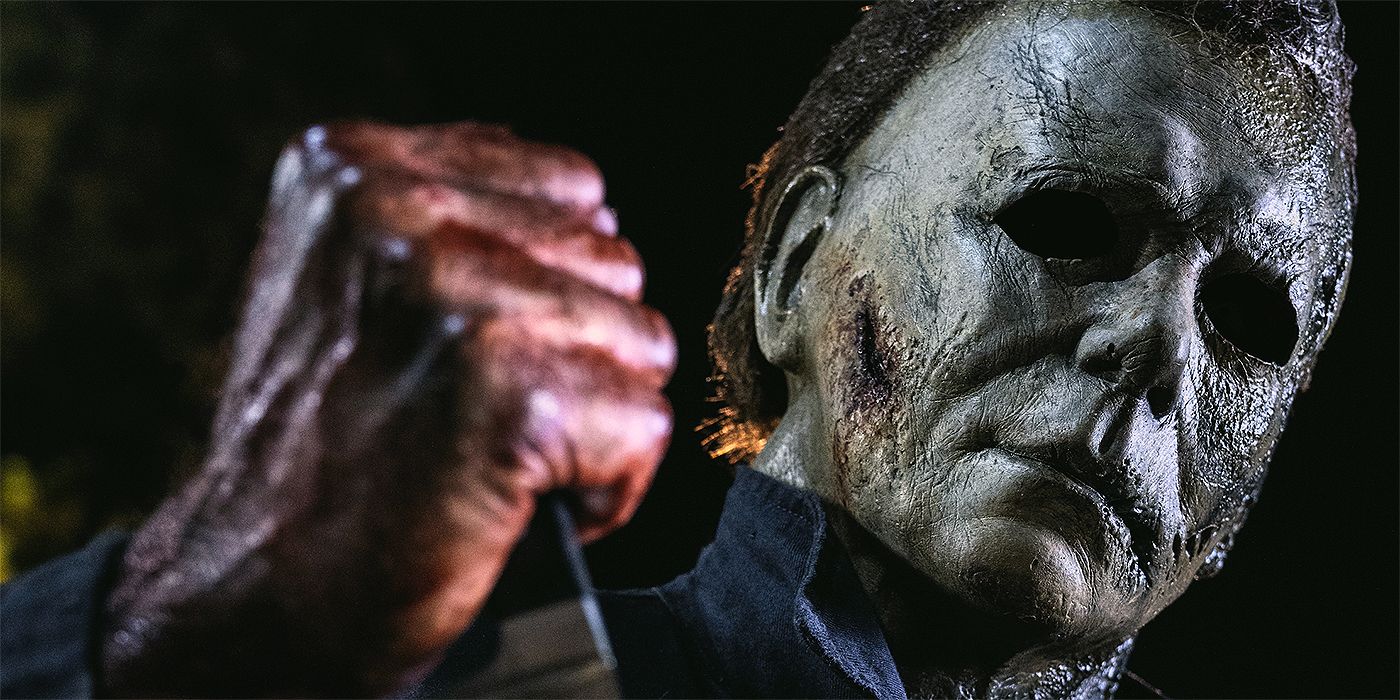WARNING: The following contains spoilers for Halloween Kills, now playing in theaters and on Peacock.
2018's Halloween was not only a return to the iconic slasher Michael Myers, but it was also a reinvigoration of a franchise that hadn't been in theaters for almost a decade. Disregarding the other sequels that came before it, Halloween was a direct continuation of the 1978 film and the beginning of a new trilogy. The film was met with positive critical acclaim after its release, receiving a 79 percent rating on Rotten Tomatoes, making it "certified fresh." So with such promise surrounding this new franchise, why has the sequel, Halloween Kills, gotten such mixed reviews?
Halloween Kills picks up right where the last film left off. Michael survives Laurie's trap and escapes her burning house. After a quick massacre of the firemen sent in to douse the flames, Michael begins a one-track journey to his home. However, rather than partake in a safe stroll through Haddonfield, he instead chooses to continue his bloodbath, massacring anyone in his path.
With the town up in arms over Michael's continued assault, they decide to form an offensive and try to hunt down and kill him, repeating the phrase, "Evil dies tonight." The film sets up many major ideas revolving around mob mentality and how sometimes a story doesn't revolve around one person. Halloween Kills has all of the makings of a film that could redefine the slasher genre as both a bloody good time and meta-narrative about humans and how fear can change them. Instead, the movie only garnered 39 percent on Rotten Tomatoes due to a host of issues.
The general consensus for why Halloween Kills has been so divisive with critics has much to do with how it doesn't do anything to move the franchise forward. It maintains all of its great slasher kills and moments but ultimately lacks any real substance that impacts the character's lore. For example, the first film places Michael in a new era and shows how Laurie Strode (Jamie Lee Curtis) has evolved as a survivor and is just as much of a tormentor to Michael as he was to her. Unfortunately, to critics, the film lacks this same energy and ultimately falls flat with a percentage of the audience.
In contrast, fans and moviegoers have had a decidedly more enjoyable time with the film than the critics. That being said, there are still critiques that voice similar issues the critics had, such as narrative impact. However, most audiences feel Halloween Kills was serviceable as a slasher film, considering it offers a massive body count. The story also builds up the legend of Michael in a way that makes him even more terrifying than before. On average, most fans' satisfaction derives from how the movie delivers on kills and overall feels like a story, surprises and all.
As a result of both critics and fans, the reason that Halloween Kills has split audiences in such a way has to do with how the film is viewed. When watched as a movie and sequel to a highly successful entry, it falls flat with critics due to how it handles the plot and overarching narrative. But when watched as a new Halloween entry and slasher film, it offers a lot in terms of gore, unique kills and action. Ultimately depending on the audience, the film either succeeds as a slasher or stumbles as a serviceable sequel.
Halloween Kills is now in theaters and streaming on Peacock.



